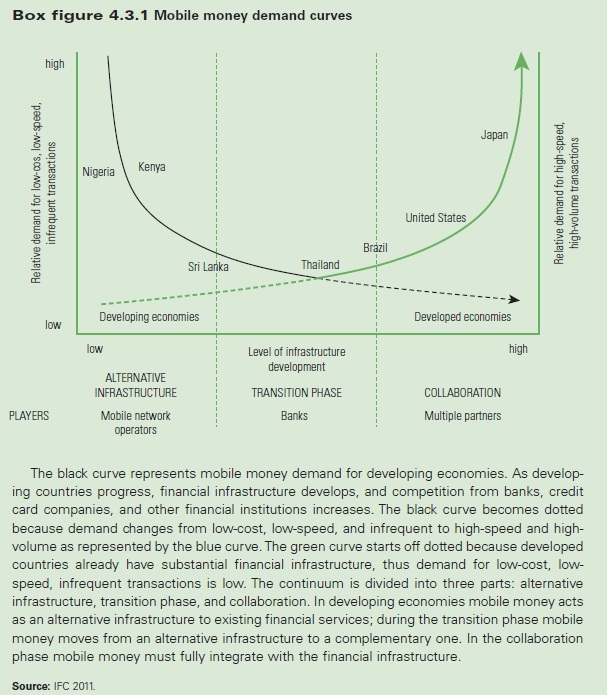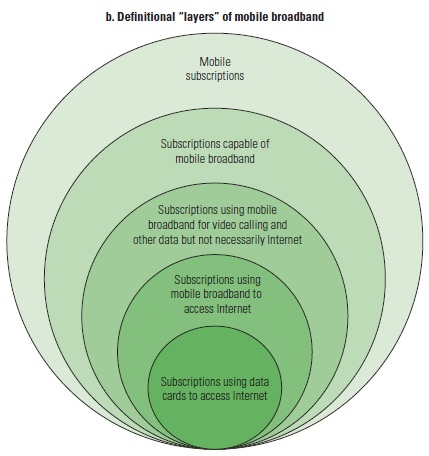Takeaways from the World Bank ‘Maximizing Mobile’ report
As of 2012, nearly three-quarters of the world’s population has access to a mobile phone. Soon it will be common knowledge that the developing world is more dependent on mobile applications than even developed countries. After all, mobile applications are quickly strengthening agriculture, health, money, governance, and entrepreneurship in developing regions. Accordingly, to capture and quantify the exponential mobile progress, the World Bank recently issued a report, Information and Communications for Development 2012: Maximizing Mobile.
Many examples and case studies showcase African innovation. (Page numbers are in quotes)
Agriculture:
- In Niger, grain traders with mobile application usage report 29% income growth. Demand for mobile grain price information has grown mostly organically. (23)
- Tanzanian farmers have started using smartphones to improve farming techniques through visual learning. (25)
- Cote d’Ivoire used a web platform (Wonzomai) to monitor 2010 elections. (26)
- In Egypt, 9% of households had mobile Internet access in 2009. As of 2011, only 15% of mobile phone usage in Egypt was for Internet services. (27)
- Impact of mobile ICT on farmers and traders ranges from 7-36% (Morocco, Uganda, Niger, Ghana, Kenya). (34)
Health:
- RapidSMS has allowed health workers in rural areas of Malawi to transmit weight and height information in two minutes instead of the two months needed under the previous system. Data accuracy also increased dramatically. (23)
- Kenya: Leading player in mobile for development, largely because of the success of the mPesa mobile payment ecosystem, based on local application developers, projects mounted by local nongovernmental organizations (NGOs), favorable governmental policies, foreign investment, and stable economic conditions. However, streamlined mHealth programs are only recently beginning to emerge. (48)
- MEDAfrica.org, launched in November 2011, integrates a variety of mHealth elements into a single platform. (48)
- 29 Sub-Saharan African countries have 1+ mHealth application. (infographic #2)
- In Ethiopia, RapidSMS helps monitor UNICEF’s food chain. (48)
- In absolute terms, Africa is still the region with the most countries with mHealth deployments and has been the leader since at least 2003. (51)
Selected examples of mHealth projects and lessons learned (54):
- Botswana: Kgonafalo allows for remote diagnosis of health ailments. A pilot project served 6 areas but is ready to expand to 25. Handsets have been replaced with Android tablets.
- Kenya: Changamka MicroHealth links health care providers with medical insurance companies. It is still mainly confined to Nairobi after 4 years of use.
- Senegal: RapidSMS saves costs by using SMS aggregation to send text messages to multiple recipients for a single cost.
- South Africa: Cell-Life works with over 50 organizations to notify patients to take medication.
Money:
- SSA has 56 mobile money deployments as of March 2012 – nearly as many as the rest of the world combined. (63)
- M-PESA is still used mainly for sending money in Kenya (only a few use it for savings). (64)
- Safaricom’s M-PESA system supports 23,000 jobs for agents in Kenya. Airtel Kenya, the second-biggest mobile operator, plans to recruit some 25,000 agents for its mobile money service. (76)
Mobile broadband:
- As of Q3 2011, Kenya had 13% mobile broadband penetration yet only 0.1% fixed broadband penetration. South Africa saw a similar trend, with 20% mobile broadband penetration, but only 2% fixed broadband penetration. (104)
- Wireless broadband subscriptions, even with fixed subscriptions in 2007, are now 3x higher. (121)
- South African smartphone penetration was just under 20% in December 2011. (124)
Mobile broadband is still in its infancy, but the World Bank proposes ways to achieve successful adoption (7):
- boost availability of spectrum
- focus on network coverage
- safeguard competition
- develop national backbone networks
- foster infrastructure sharing
- create affordable broadband services and the devices needed to access them
Note: Mobile broadband data doesn’t exist for most African nations, hence the lack of reference of much of Africa in the report.
Source: Information and Communications for Development 2012: Maximizing Mobile; DOI: 10.1596/978-0-8213-8991-1; website: http://www.worldbank.org/ict/IC4D2012. License: Creative Commons Attribution CC BY 3.0














 Twitter
Twitter Facebook
Facebook Pinterest
Pinterest
[…] to Tim Katlic at oAfrica for writing this post and sharing it with […]
[…] Takeaways from the World Bank ‘Maximizing Mobile’ report » oAfrica […]